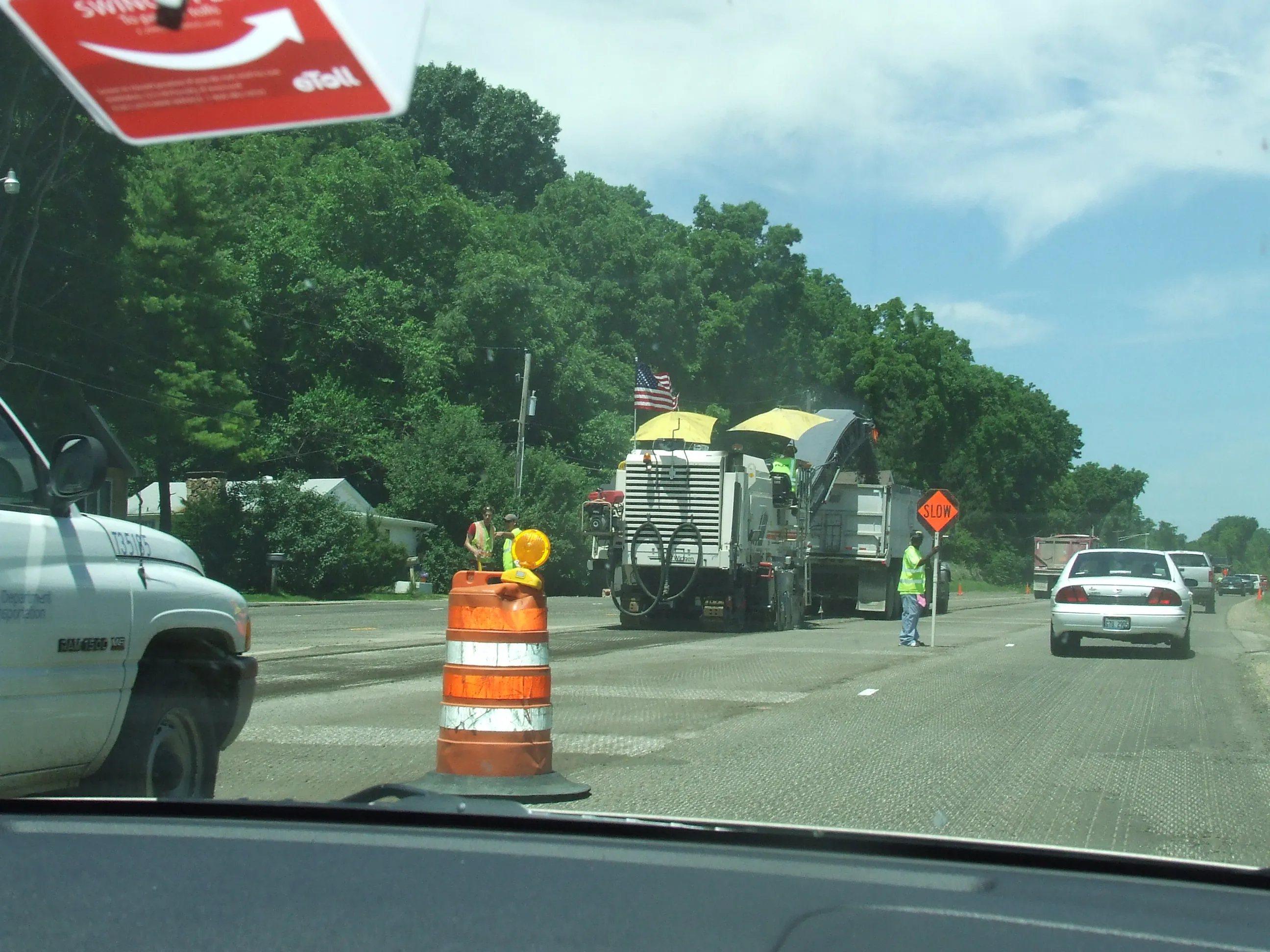The outlook for the 2012 transportation construction market is mixed, according to the American Road & Transportation Builders Association's (ARTBA). The 2012 Transportation Construction Market forecast from ARTBA shows that the industry will face uncertain times during next year.
April 26, 2012
Read time: 4 mins
The outlook for the 2012 transportation construction market is mixed, according to the American Road & Transportation Builders Association’s (ARTBA).
The 2012 Transportation Construction Market forecast from ARTBA shows that the industry will face uncertain times during next year. “There is good news and bad news for 2012 depending on the mode of transportation,” according to ARTBA’s senior economist, Alison Premo Black.
The 90-minute economic forecast was aimed at Wall Street analysts and construction industry executives.
Transportation remains the most stable of all construction sectors in the US. The bad news is that the highway and bridge construction market is expected to contract 6%, to US$72.6 billion from an estimated $77 billion in 2011, while the subway and light rail markets will be down even more.
“The main factors driving the decline in highway and bridge construction are not surprising: the winding down of infrastructure investment under the American Recovery & Reinvestment Act (ARRA), continued weak growth in the U.S. economy, persistent state and local budget challenges, and a static federal-aid highway program,” Black said. Black cautioned that the long-delayed highway/transit reauthorisation bill remains a “wild card.” If Congress in early 2012 passes a multi-year bill, that at minimum, maintains current investment levels, it could help interject greater certainty in the market.
Both the Senate and House proposals also contain language to expand the Transportation Infrastructure Finance and Innovation Act (TIFIA), which if leveraged quickly, could offer another market boost, she explained.
The good news in the ARTBA forecast: the railroad market, driven largely by private sector investment, is expected to increase by nearly 4%; and the value of construction for ports and waterways is expected to grow by 6%, driven by work on both coasts in preparation for the 2014 expansion of the Panama Canal. Also good news, the transportation construction market sector will remain the most stable industry sector as it has been for the past five years.
Between 2007 and 2011, the real value of highway and bridge construction, adjusted with the ARTBA Price Index for material prices, wages and inflation, fell only 10%. Over the same period, the real value of total construction work in the US fell by one-third from $1.1 trillion to an estimated $769 billion. And the real value of residential construction tanked more than 50% from $500.5 billion in 2007 to $236.5 billion in 2011. The historical stability of the transportation market is in large part due to the role of public sector financing, according to ARTBA.
Despite the national downturn in market activity, some states are poised for growth, Black noted. There are 18 states where the value of state and local government highway and bridge contract awards for fiscal year 2011 is higher compared to fiscal year 2010. This is an indicator that the value of work in those states will likely increase in the coming year as those projects are underway. The value of contract awards is down in 19 states and Washington DC. Contract awards in the remaining eight states were relatively stable, either up or down within 5%. ARTBA’s 2012 forecast for other transportation modes show that the value of bridge work is expected to drop by 10% from $26.3 billion to $23.6 billion, primarily because nearly all the projects that include ARRA investments are finished or underway and state/local DOTs are pulling back on new projects. This is likely due to a combination of the delayed federal reauthorisation bill, and continued state and local budget challenges.
The value of work done on airport runways is expected to fall 4% from $4.9 billion in 2011 to $4.7 billion, primarily because of flat funding for the Airport Improvement Program and continued failure by Congress to pass a new aviation bill. After a decade of growth, the real value of subway and light rail construction is expected to drop nearly 16% from $5.4 billion in 2011 to $4.6 billion.
Contract awards for subway and light rail are down sharply in 2011, indicating transit agencies are pulling back on projects. ARTBA has a series of econometric models that take into account current economic conditions, state and local funding and federal investment. The ARTBA forecast model assumes: 1) the US economy will continue to show modest growth in the coming years; 2) material prices and project costs will be in line with inflation; and 3) there is no major increase or decrease in federal investment over the next five years.
The 2012 Transportation Construction Market forecast from ARTBA shows that the industry will face uncertain times during next year. “There is good news and bad news for 2012 depending on the mode of transportation,” according to ARTBA’s senior economist, Alison Premo Black.
The 90-minute economic forecast was aimed at Wall Street analysts and construction industry executives.
Transportation remains the most stable of all construction sectors in the US. The bad news is that the highway and bridge construction market is expected to contract 6%, to US$72.6 billion from an estimated $77 billion in 2011, while the subway and light rail markets will be down even more.
“The main factors driving the decline in highway and bridge construction are not surprising: the winding down of infrastructure investment under the American Recovery & Reinvestment Act (ARRA), continued weak growth in the U.S. economy, persistent state and local budget challenges, and a static federal-aid highway program,” Black said. Black cautioned that the long-delayed highway/transit reauthorisation bill remains a “wild card.” If Congress in early 2012 passes a multi-year bill, that at minimum, maintains current investment levels, it could help interject greater certainty in the market.
Both the Senate and House proposals also contain language to expand the Transportation Infrastructure Finance and Innovation Act (TIFIA), which if leveraged quickly, could offer another market boost, she explained.
The good news in the ARTBA forecast: the railroad market, driven largely by private sector investment, is expected to increase by nearly 4%; and the value of construction for ports and waterways is expected to grow by 6%, driven by work on both coasts in preparation for the 2014 expansion of the Panama Canal. Also good news, the transportation construction market sector will remain the most stable industry sector as it has been for the past five years.
Between 2007 and 2011, the real value of highway and bridge construction, adjusted with the ARTBA Price Index for material prices, wages and inflation, fell only 10%. Over the same period, the real value of total construction work in the US fell by one-third from $1.1 trillion to an estimated $769 billion. And the real value of residential construction tanked more than 50% from $500.5 billion in 2007 to $236.5 billion in 2011. The historical stability of the transportation market is in large part due to the role of public sector financing, according to ARTBA.
Despite the national downturn in market activity, some states are poised for growth, Black noted. There are 18 states where the value of state and local government highway and bridge contract awards for fiscal year 2011 is higher compared to fiscal year 2010. This is an indicator that the value of work in those states will likely increase in the coming year as those projects are underway. The value of contract awards is down in 19 states and Washington DC. Contract awards in the remaining eight states were relatively stable, either up or down within 5%. ARTBA’s 2012 forecast for other transportation modes show that the value of bridge work is expected to drop by 10% from $26.3 billion to $23.6 billion, primarily because nearly all the projects that include ARRA investments are finished or underway and state/local DOTs are pulling back on new projects. This is likely due to a combination of the delayed federal reauthorisation bill, and continued state and local budget challenges.
The value of work done on airport runways is expected to fall 4% from $4.9 billion in 2011 to $4.7 billion, primarily because of flat funding for the Airport Improvement Program and continued failure by Congress to pass a new aviation bill. After a decade of growth, the real value of subway and light rail construction is expected to drop nearly 16% from $5.4 billion in 2011 to $4.6 billion.
Contract awards for subway and light rail are down sharply in 2011, indicating transit agencies are pulling back on projects. ARTBA has a series of econometric models that take into account current economic conditions, state and local funding and federal investment. The ARTBA forecast model assumes: 1) the US economy will continue to show modest growth in the coming years; 2) material prices and project costs will be in line with inflation; and 3) there is no major increase or decrease in federal investment over the next five years.







